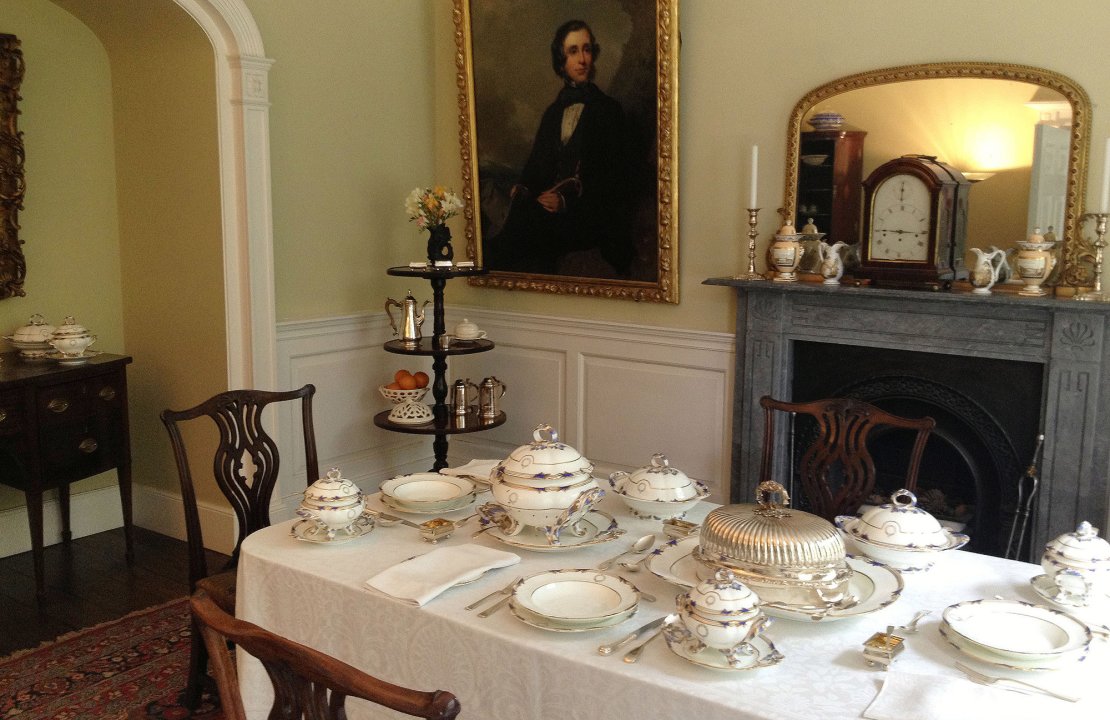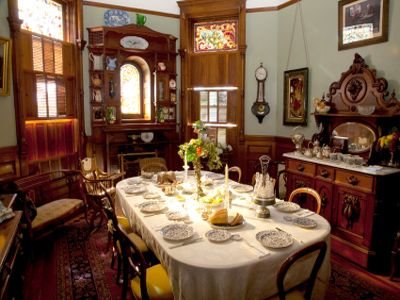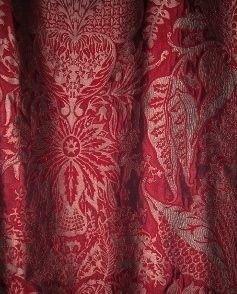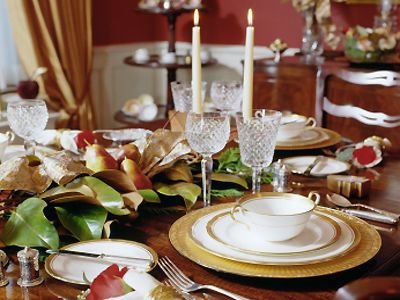To get you in the mood, you could try visiting a National Trust Property such as Waddesdon Manor, Tredegar House or Nunnington Hall; all would be sure to inspire with their sumptuously grand decorated Dining Halls. Many of these elements can be brought to life in your own house cheaper than you may think and it’s always useful to have a room suitable, in case one finds oneself needing to entertain a state dignitary or other such important person throughout the rest of the year. On other occasions you can always tone down the table settings and decorations to suit.
How do I create a Victorian dining room?
There are some key elements of a Victorian dining room. Let’s start from the ground upwards. The Victorian dining room would usually have a sanded and waxed then polished or varnished dark wood floor. If your floorboards are pine rather than oak or mahogany, the Victorian cheat’s technique was to stain the soft wood to impersonate the colour of the much more expensive hard woods before waxing or varnishing – same effect but a different budget! Once your floor has been sanded, stained, waxed or varnished, it would usually have a Persian style rug in a dark sumptuous colour placed upon it.
The walls
Traditional Victorian dining room walls can be decorated in a number of ways but the two most common and faithful styles to the Victorian ideal are wood panelling, usually left as a dark wood colour or sometimes painted. This would be present below the dado (chair) rail with a sumptuous rich patterned wallpaper above the dado rail. The cheaper option both for the Victorians and for us would be a Lincrusta or Anaglypta wallpaper that impersonates panelling painted in a dark colour, potentially with the patterns picked out in a slightly contrasting colour below the dado rail, with a complementary coloured paint or patterned wallpaper above the
dado rail.
The ceiling
If you have a Victorian room which has suffered 1960’s ‘modernisation’ or indeed a room that’s devoid of any plaster cornicing, you may be surprised how reasonable the cost is to put this back. A decent plaster ceiling rose for example can cost the same as a pair of reindeer adorned boxer shorts and will give you many more years of pleasure. If you have the height to do it, ceilings can also be painted in dark hues for extra sumptuousness. Avoid if your ceilings are not high as this will make the room darker.
Lighting
This should be gentle to provide an atmosphere conducive to relaxation. The traditional choice would be a chandelier directly over the dining table throwing out a soft light, with wall sconces along the walls to throw out additional pools of soft light to illuminate sideboards. Dimmer switches are useful so that lights can be dimmed as the evening draws on and the guests become more relaxed.
Furniture
To be faithful to the Victorians, the way to go would be a long dark wood antique dining table seating 16 with matching chairs and sideboards but the space you have to accommodate all this furniture will depend on the proportions of your room. A more realistic scale unless you live in a vast house with enormous rooms is probably a table to seat 8 or 10 with oak or mahogany chairs with traditional upholstery on the cushions. Large sets of matching chairs can be expensive to purchase however if you are happy to mix and match a couple of different chair styles these can be easier to find and less expensive to purchase.
A dark wood sideboard is a useful piece of furniture, if there is room, on which to keep the food and drinks that are best consumed at room temperature: red wines, sherry, port, cheeses, chocolates for after the meal. This is especially handy at times like Christmas when there is little room in the kitchen storage areas for all of the different foods we need to stock up on and it also means that you can store premade dishes like the cheeseboard well in advance of the meal.
Curtains and upholstery
Mid winter is a time of year when we can really appreciate a set of thick, heavy ornate curtains. Most usually the Victorians would have a set of summer curtains and a set of winter curtains in several layers (net, medium weight and thick). Nowadays one winter set will be enough as with our modern thermal curtain linings our one set can do the same job of insulating a room as their three sets. Your curtains will be closed from 3.30pm onwards on Christmas day and a thick lining material will be worth the extra investment. Choose a fabric that complements the colour scheme of your room but is not so busy that you will get bored with it and wish to change it after a few years – a good set of curtains for large windows could easily set you back over £1000. The Victorians chose deep reds, burgundys, dark blues and greens. Choose a matching and fairly substantial dark wood or brass curtain pole with some ornate finials – 2 inches plus in diameter. These items should last you many years if not decades so should be seen as an investment in your home.
Other must haves for Christmas Day
If your budget is tight, many of the items below can found for very reasonable price at bric-a-brac antiques markets for less than the ‘Ikea’ style equivalent.
A roaring open fire really adds to the festive atmosphere – make sure you have a large log basket or coal scuttle filled to the brim on Christmas morning as you will not feel like venturing outside to collect logs once you start your meal.
Silver candelabras or candlesticks. These need not be antiques as there are plenty of reasonably priced decorative and attractive reproductions that will enhance your table setting.
Glass decanters of brandy, wine and port – again these are inexpensive to buy and are a great gift to take to anybody hosting the Christmas meal.
A decent cheese cutter – once you use a good one of these you will never use a knife again. Great for cutting all cheeses and really enhance the aesthetics of your cheeseboard.
Crystal glasses – you will not use these every day but they really do make Christmas feel special.
Freshly laundered linen napkins with silver or silver style napkins rings and matching table accessories.
A festive table centre – this can include holly, mistletoe and a few red or white flowers. If you like to take the quirky approach you could always use a Natural Curiosity, which is bound to create a talking point during the meal. You may also find simple individual decorations on a side plate can be great as large centrepieces will probably have to be removed from the table to make way for the lavish food displays.
Your Victorian dining room will play a central role on Christmas Day for creating a cosy and elegant atmosphere for your guests. Relax and indulge!
You can read our ultimate guide to period property renovation here.




Posted by Michale - Oct 17, 2018 - 12:03
I’m not that much of a internet reader to be honest but
your sites really nice, keep it up! I’ll go ahead and bookmark your site
to come back down the road. Many thanks
pardoning (Mirta)
Posted by lordlocksmith - Dec 22, 2018 - 18:25
Good evening.
How I’ve never stumbled across your excellent site before, I do not know! We’re in the midst of sympathetically renovating our Victorian house in Plymouth, Devon. Your site is now going to be my new favourite!
Regards